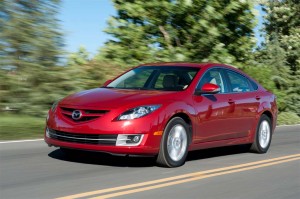Mazda has confirmed that it will end U.S. production of its Mazda6, the next-generation midsize sedan to be built at its main plant in Japan.
But the maker says it is still studying “future opportunities” for the suburban Detroit factory it currently operates as part of a decades-old joint venture with Ford Motor Co. Industry insiders nonetheless Mazda will eventually pull out of the partnership, which could lead to the closure of the factory, which currently produces both the Mazda6 and the Ford Mustang.
Currently, Mazda produces the slow-selling Mazda6 at three factories, the AutoAlliance International facility in Flat Rock, Michigan, the FAW plant in Changchun, China, and the maker’s main assembly line, in Hofu, Japan.
With demand down it makes little sense to keep production spread out, acknowledged Mazda CEO Takashi Yamanouchi, confirming recent media reports, including an extensive analysis on TheDetroitBureau.com last week.
Moving forward, he said, with the launch of the next-generation sedan, Mazda will “consolidate it at Hofu in order to improve production and investment efficiencies and optimize our business,“ said Yamanouchi, adding that, “The decision was made after carefully assessing all risks and opportunities, including global needs, changing demand in North America, and exchange rate exposure.”
The maker has not announced a specific timetable for the shift, but it is expected to occur within about a year if the Mazda6 replacement remains on schedule.
Nonetheless, he insisted that, “Going forward, Mazda will strive to maintain and grow our business in America.”
Significantly, Mazda’s announcement did not specifically call for an end to the AutoAlliance joint venture with Ford.
The two companies have been cooperating since the 1970s and, for a number of years, Mazda was actually under the control of the U.S. maker. But in recent years, Ford has been steadily selling off most of its holdings in its Japanese affiliate. Thus, few industry observers have been surprised by reports that Mazda might pull of the Flat Rock joint venture.
The plant was originally opened, in 1985, as Mazda Motor Manufacturing (USA) Corp. With the two companies expanding their ties and Ford starting using some of the sprawling factory’s capacity, the name was changed to the current AutoAlliance in 1992.
Bu with sales of both the Mazda6 and Mustang running slow the two companies have been exploring their alternatives. Recent reports have suggested Mazda would pull out entirely. Unless Ford could come up with additional product to improve capacity utilization, however, that might lead to the complete closure of the Flat Rock facility.
The announcement from Mazda does appear to leave open some alternatives. For one thing, the maker might consider shifting production of one of its smaller products from Japan to the U.S. Shifting exchange rates – and a more flexible union — have begun to make it possible to build small cars in the States, even as it has become too costly in Japan.
General Motors is just launching production of the Chevrolet Sonic at its plant in Lake Orion, Michigan, a move made possible, in part, by a new 2-tier wage structure approved by the United Auto Workers Union.

